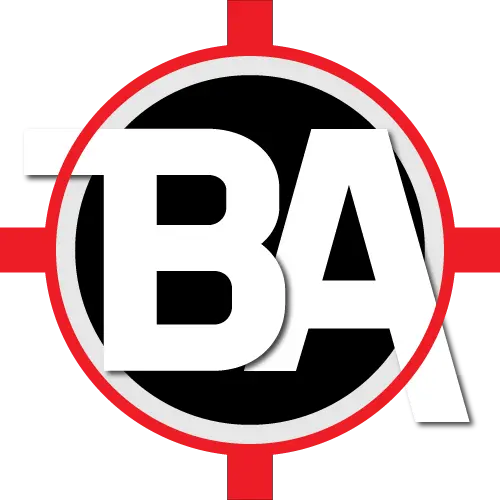
Introduction to Diagram Generator AI #
Creating visual model diagrams is an essential part of the Requirement Analysis. It helps to visualize a big picture of the systems, business processes, data flows, entity relationships and business rules.
It’s required to gather a lot of information to create a model diagram. Drawing a model diagram itself requires you to put in a considerable amount of effort. Some organizations require you to follow standard notations such as UML, and BPMN to create model diagrams.
In the era of AI, diagramming tools are also catching up and introducing AI-powered features to their diagramming capabilities.
The following are the most popular Free AI Diagram Generator Tools that can generate model diagrams based on the textual prompts i.e. Text to Diagram.
I have used these tools and found that the accuracy of AI-generated diagrams is pretty good. That means it will give you the basic skeleton of a diagram and you will have to tweak it a little bit to make it accurate.
It will help you come up with a model diagram in a very short amount of time so that you can focus more on the core business analysis activities.
Let’s take a look at the AI diagramming generator tools, their features, examples and outputs.
Draw.io #
Draw.io is the most widely used browser-based diagramming software that’s completely free and also it does not require registration or login.
What I like the most is that it does not store your diagram data on their server. When you finish a diagram, you can save it either locally or on your cloud storage (Google Drive or Dropbox).
It’s truly a great diagramming tool with many essential features such as:
- Diagram templates
- Shape Library to support all the formats/notations such as UML, BPMN etc.
- Easy to use diagram editor
- Integration with JIRA, Confluence, MS Office, Google Workspace, Notion and many other apps
- Collaborate with other people in real-time with shared cursors
- Import, Export and Embed diagrams
Steps to Generate a Diagram in Draw.io #
- Open this URL in the browser: https://app.diagrams.net/
- Click on “Create New Diagram”
- Click on the “Generate” box as shown below

- Enter your text prompt in the box as shown below.

- Click “OK” to generate the diagram
- It generates the diagram and shows a preview in the same box. Click on the magnifying glass icon to enlarge it and see if it’s correct. If you are not satisfied with the output, you can click on the pencil icon on the left and just click OK again to regenerate another version of the diagram. Repeat this process until you get a satisfactory result.
- Once the generated diagram is fine with you, click on the “Create” button to open the generated diagram in the editor so that you can review it and make further changes if needed.
There is another way to generate a diagram using “Smart Template” as shown below.

Here, you can enter your prompt, select the type of diagram and click on the “Generate” button. It will show the preview of the generated diagram in the box below. To regenerate another version of the diagram, just click on the “Generate” button again.
Examples of AI-Generated Diagrams using Draw.io #
Draw.io uses ChatGPT as LLM to generate diagrams from the entered Text Prompts.
You can either enter simple text prompt to generate a Generic diagram OR enter a detailed text prompt to generate a diagram with more specific information.
Let’s take a look at both the examples.
Simple Text Prompt
Prompt = Process Model that describes the typical loan approval process in a bank.
Output

Detailed Text Prompt
Prompt:
vertical flow chart –
A customer fills in the application form to apply for a personal loan.
A bank officer verifies the application.
Is the verification successful?
Yes - proceed to next step to perform credit check.
No - ask the customer to provide missing details.
Is the credit check successful?
Yes – approve the loan application, proceed to next step to send a loan proposal.
No – reject the loan application and process is closed.
A Bank officer sends a loan proposal to the customer.
Has the customer accepted the proposal?
Yes – disburse the loan and close the process.
No – close the process.
Output:

The generated outputs are not so impressive yet but it helps to create a basic skeleton that you can modify to get to your desired diagram.
Also, there is a limitation that you cannot generate diagrams in complex notation such as BPMN.
FigJam from Figma #
FigJam is an online digital whiteboard and collaboration tool that can be used to brainstorm ideas, create model diagrams and collaborate with stakeholders.
As of June 2024, FigJam AI is in Beta mode.
With FigJam AI, you can generate basic diagrams such as Flow Charts, Gantt Charts and Organization Charts by providing text prompts.
FigJam’s UI is very intuitive and easy to use.
You should have a Figma Account to be able to use FigJam.
Steps to Generate a Flow Chart using FigJam #
- After login to Figma, click on “New FigJam” Board
- On the FigJam board, left side, enter the prompt to generate a diagram
- Click on the “Generate” button to generate the diagram.
It’s very simple to use and the accuracy is very good as compared to Draw.io.
Examples of AI-generated Flow Charts using FigJam AI #
FigJam also uses Open AI as LLM to generate diagrams from the entered Text Prompts.
You can either enter simple text prompt to generate a Generic diagram OR enter a detailed text prompt to generate a diagram with more specific information.
Let’s take a look at both the examples.
Simple Prompt
Prompt = Create a Flow Chart for Client Onboarding Process in a Bank
Output:

Detailed Prompt
Prompt
Create a Flow Chart for the following process:
A customer fills in the application form to apply for a personal loan.
A bank officer verifies the application.
Is the verification successful?
Yes - proceed to next step to perform credit check.
No - ask the customer to provide missing details.
Is the credit check successful?
Yes – approve the loan application, proceed to next step to send a loan proposal.
No – reject the loan application and process is closed.
A Bank officer sends a loan proposal to the customer.
Has the customer accepted the proposal?
Yes – disburse the loan and close the process.
No – close the process.
Output:

As you can see, the generated outputs are pretty impressive and accurate even though it’s still in Beta.
The only limitation is that only a few types of diagrams can be generated.
Once your diagram is complete, you can share it with stakeholders using any of the following ways:
- Invite stakeholders to the diagram file to review and provide contextual comments
- Export as PNG image to include in your specifications
- Embed anywhere on the web.
Conclusion #
Draw.io can be used if you are looking for a Free diagram generator tool. There is no limit. You can generate an unlimited number of diagrams using its AI generator. The only downside is the accuracy. Hoping to see an improvement in accuracy very soon. Overall, it’s a very good diagramming tool.
FigJam can be used if you are looking to generate basic models such as Flow Charts, Organization Charts and Gantt Charts. It generates the diagrams with very good accuracy. Currently, the AI generator is offered in the Free version without any limitations but in future, there may be some kind of limitation in the Free plan.
Disclaimer: The information contained in this post is for informational purposes only. While we have made reasonable efforts to ensure the accuracy of the information presented, the tools and applications mentioned may change or evolve at any time. We do not guarantee the functionality, effectiveness, or safety of any particular tool.

